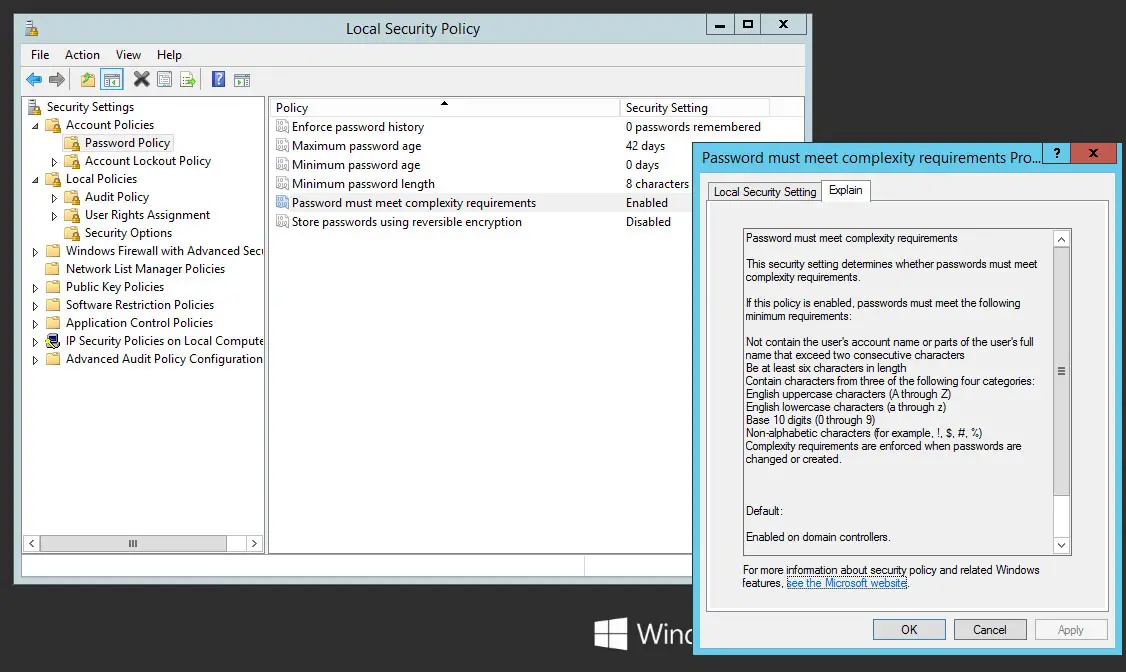

- #MICROSOFT LAPS VS MANAGEENGINE PASSWORD MANAGER PRO ZIP FILE#
- #MICROSOFT LAPS VS MANAGEENGINE PASSWORD MANAGER PRO UPDATE#
- #MICROSOFT LAPS VS MANAGEENGINE PASSWORD MANAGER PRO ZIP#
SolutionĪ trusted administrator should obtain or create a certificate and private key, then export that certificate to a. The PowerShell solution here is better though. If the choice is between LAPS and doing nothing, then LAPS is far better than nothing. You will also need a digital certificate, either self-signed or from a PKI, but this is a good thing because it uses the public key from the certificate for encryption. However, the solution does require, at a minimum, PowerShell to be on every managed host, and it scales best in an Active Directory environment with Group Policy.

#MICROSOFT LAPS VS MANAGEENGINE PASSWORD MANAGER PRO UPDATE#
The solution presented below never stores or transmits passwords in plaintext, not even temporarily, does not require an Active Directory schema update (or AD for that matter), does not require a Group Policy extension, works on stand-alone computers, can manage any number of local user accounts, you have access to the PowerShell source code for inspection or customization (it's in the public domain), and it works with any SMB server, including Samba and TrueNAS. However, note that LAPS 1) stores passwords in plaintext in the Active Directory database, using AD permissions to restrict access to the passwords, 2) requires an update to the Active Directory schema, 3) requires a Group Policy client-side extension to be installed (an MSI package) on all managed hosts, 4) is not for stand-alone servers or workstations because of the Active Directory and Group Policy components, 5) can only be used to manage one local user account on each machine, no more, 6) we don't have access to the C++ source code of the LAPS client-side extension if we need to customize it, and 7) though the LAPS tools themselves encrypt passwords while in transit over the network, admins must take care to use network encryption when using other tools when reading the passwords out of AD, e.g., a third-party utility might use LDAP in plaintext by default (this has nothing to do with LAPS per se, it's only something to be aware of). You can get technical support when using LAPS, and it comes with a GUI client for admins as well as a PowerShell module. There is also Microsoft's own Local Administrator Password Solution ( LAPS). Cyber-Ark Privileged Identity/Session Management.

If you would prefer a non-PowerShell commercial product to manage admin passwords, here are few to consider:
#MICROSOFT LAPS VS MANAGEENGINE PASSWORD MANAGER PRO ZIP#
Like all scripts in the SEC505 zip file, these scripts are in the public domain too. These PowerShell scripts are intended to be relatively easy to understand and modify, you don't have to be a PowerShell guru, just have some basic familiarity.

#MICROSOFT LAPS VS MANAGEENGINE PASSWORD MANAGER PRO ZIP FILE#
Download the scripts in the SEC505 zip file from, then look inside that zip archive for the \ Da圓\UpdatePasswords folder. The Securing Windows and PowerShell Automation course at SANS (course SEC505) includes free PowerShell scripts to manage local account passwords. But how can this been done securely and conveniently? How can it scale to thousands of computers? And how can this be done for free? The passwords of local administrative accounts should be changed regularly and these passwords should be different from one computer to the next. Immediately apply the skills and techniques learned in SANS courses, ranges, and summits


 0 kommentar(er)
0 kommentar(er)
